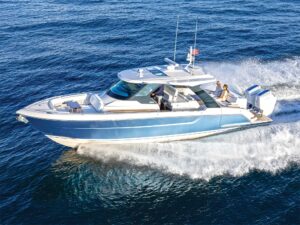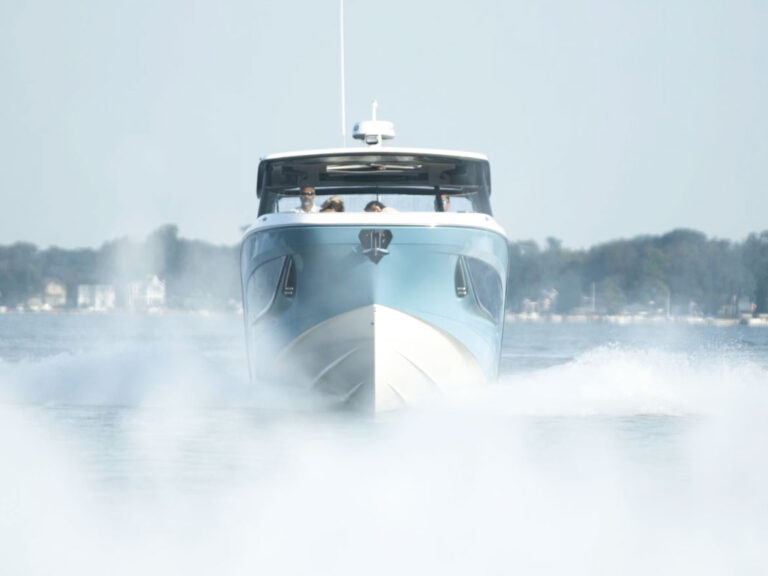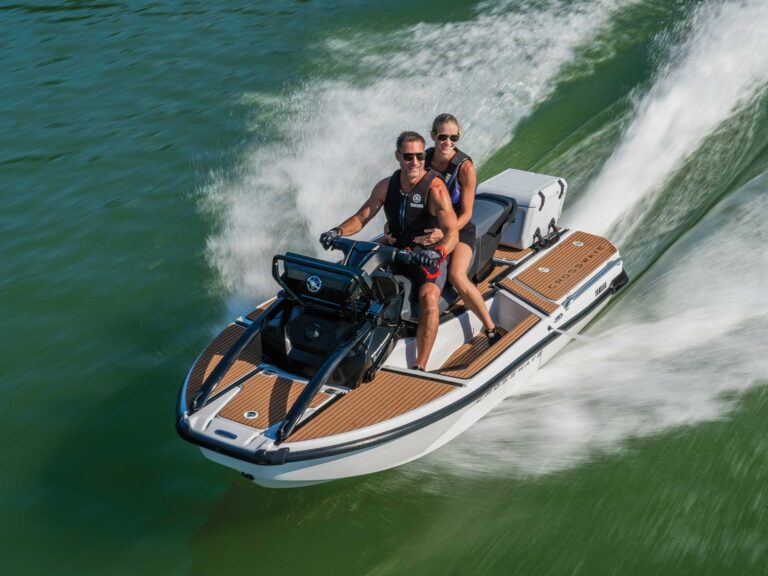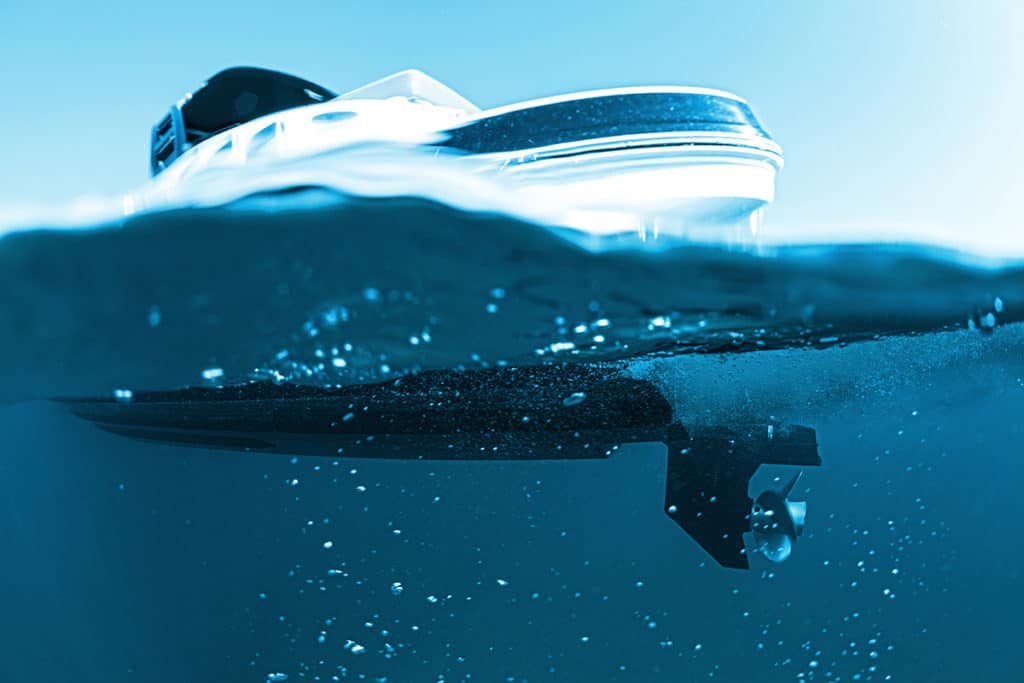
A boat shouldn’t sink unless something really bad happens, right? A high-speed collision, a fiery fuel explosion, a direct strike by lightning — these events certainly can sink a boat. But that’s not how most recreational boats go down. The sad reality is owner neglect sends most boats to the bottom.
Studies of insurance claims by BoatU.S. back this up, showing that more than two-thirds of recreational-boat sinkings happen at the dock or on a mooring. BoatU.S. further estimates that only 35 percent of such sinkings are out of an owner’s hands.
“Absent something like lightning blasting a hole in the boat or the hull becoming impaled on a piling in a major storm, a boat should never sink while sitting at the dock,” says Daniel K. Rutherford, a certified marine investigator with 35 years of marine casualty surveying experience and currently the director of claims and risk management for the Maritime Program Group. “Owner neglect by far sinks most boats at the dock.”
The upside to that? With some forethought, most dockside sinkings are entirely preventable. Here is a 10-point punch list based on the findings by BoatU.S. to keep your boat from sinking in its slip.

The (Not Always) Mighty Bilge Pump
A bilge pump can really save the day in the event of an unexpected gusher, and it’s great for cleaning up the condensation and other unavoidable drips and drops that collect in the bilge. However, there is a huge amount of overreliance on bilge pumps to prevent chronic leaks from sinking a boat. “Nine out of 10 people who call to report a sinking say, ‘The bilge pump stopped working,'” says Beth Leonard of BoatU.S. “That’s not why the boat sank.”
If a small amount of water is continually getting into the boat — like through a leaking hose connection, an ineffective shaft seal, or a minor structural leak — it is not the bilge pump’s job to keep the boat floating indefinitely. The bilge pump is there to buy some time to fix the problem of water getting into the bilge in the first place. Eventually, the pump can fail or drain the battery — and then that little leak that didn’t seem like a big deal can slowly but surely fill the boat until it sinks.
For sure, you want the bilge pump and float switch to be in good working order in the event an unexpected leak does develop, and replacing plastic corrugated bilge-pump hose with nylon reinforced smooth-wall hose is a smart move. A bilge-pump counter that shows how many times the pump has run is a great way to see if the pump is cycling on with greater frequency. If it is, then you want to sniff around for a new leak and repair it immediately.

Do Winter Right
When it comes to winterizing, an ounce of prevention can be worth gallons and gallons of cure. Ice can damage hoses below the waterline, strainer baskets and through-hull valves. Water can contaminate the gear lube during the boating season — if it freezes, it can crack metal and blow seals. Such issues can send the boat straight to the bottom come the spring thaw. Antifreeze in engine raw-water systems, strainers and freshwater systems, and fresh lube in the gear case are tops on any winterizing checklist.
Batteries sometimes go flat over the winter, rendering the bilge pump useless. If nobody is checking in on a regular basis, one or two minor leaks, or an unlucky rain or snow that ends up in the bilge, could sink her down. Super important point: Visit the boat. Winter or not, regular visits by you or marina staff can many times catch a boat that is starting to sink. You’ll have to deal with it right then, but that’s 1,000 times better than having to resurrect it from the deep.
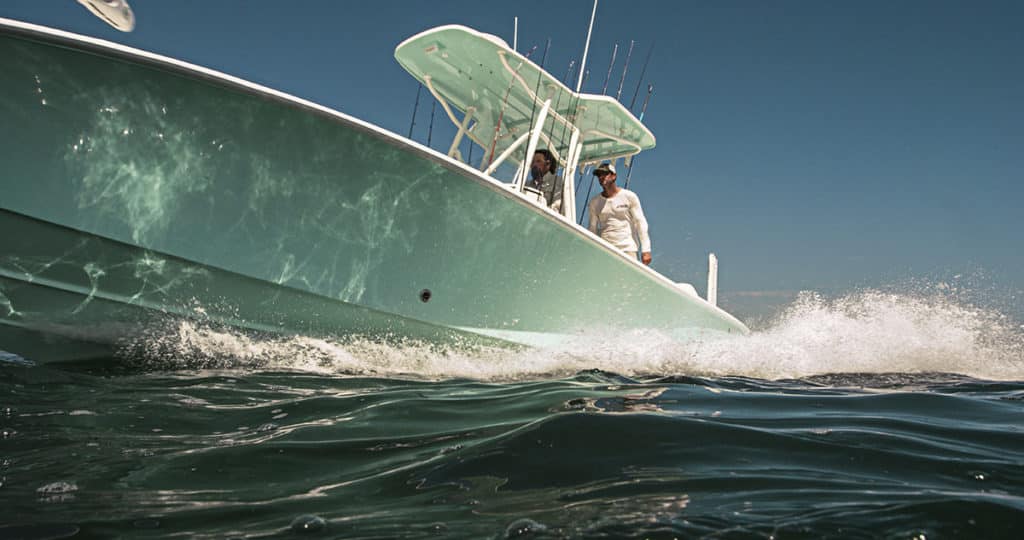
Your Boat is Full of Holes
Not to be an alarmist, but your boat is likely already full of holes below the waterline. These can include holes for a drain plug, mounting bolts, transducers, sensors, through-hull valves and other items. In a perfect world, these — and any downstream hose clamps, fittings and strainers — would all be properly fastened, sealed and/or clamped to keep water out. And they likely were when the boat was brand-new. However, age, vibration (and pounding and slapping), thermal cycling, corrosion and other factors can work to loosen clamps and bolts and even cause structural cracks around fittings — all of which can result in leaks.
Do regular checks on all below-the-waterline fittings and connections. Replacing rusty hose clamps with one, or even two, quality stainless-steel clamps on hoses below the waterline is a good idea, as is replacing worn hoses with sturdy, reinforced ones.
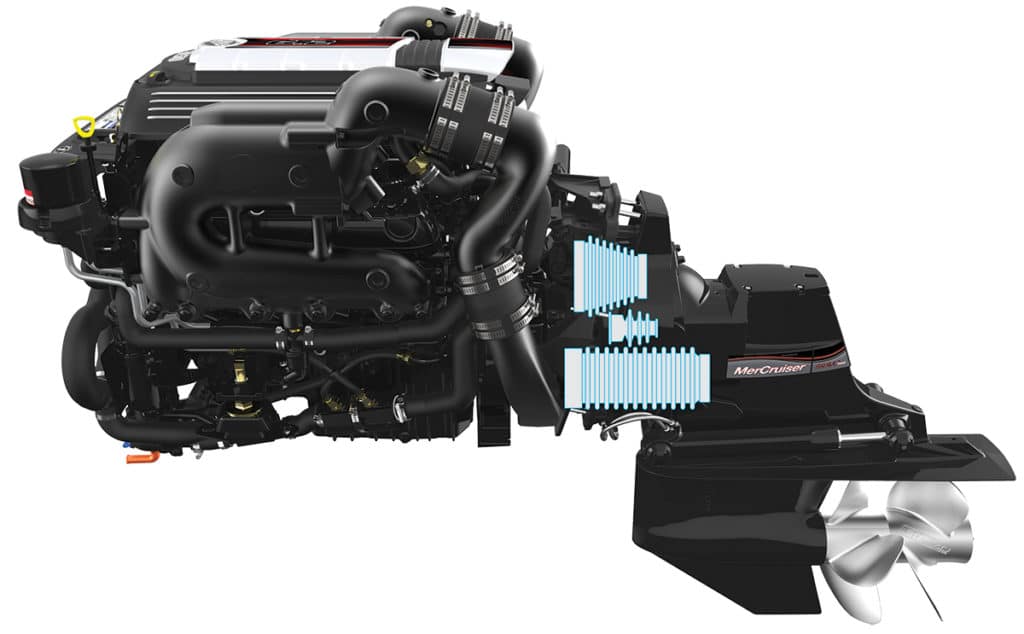
Be Good to Your Bellows
Sterndrives account for more than a quarter of all part-failure-related sinkings, and eight out of every 10 sterndrive failures involve damaged bellows. The bellows are the flexible rubber boots that seal out the water between the engine and the drive for the universal joint, exhaust, cooling water and shift cable.
The bellows maintain their watertight seal while allowing the drive to turn side to side and trim up and down, but these repeated movements can eventually result in tearing from fatigue. Age and deterioration can cause the rubber to break down over time, especially if exposed to heat or other harsh conditions. Marine growth can be particularly troublesome by forming in the creases and causing a split. Recommendations include regular inspections for tears or cracks, annual haul-outs to clean and remove growth, and full replacement every three to six years or so. Attention here can improve your odds of staying afloat by double digits.

One Drop at a Time
One below-the-waterline hole that deserves special attention is the opening where the propeller shaft passes through on an inboard boat. This will often be sealed with a few rings of packing material and a tightening gland all nicely referred to as the “stuffing box.” These are actually designed to allow a small amount of water to pass through into the bilge while the shaft is spinning in order to keep the stuffing box cool — typically only two or three drops per minute. At the dock with the engine secured, however, the seal shouldn’t allow any water inside. A slow and steady drip here can turn into a fast drip, then a stream — and we already know what happens if the bilge pump poops out trying to keep up.
Resist the temptation to keep cranking down on the gland packing year after year. The packing material can only be compressed so far, and too much pressure could eventually damage the shaft. A good rule of thumb is to replace the packing material every other year if the boat is in regular use.
Mechanical shaft seals are becoming popular, and they work great at keeping water out. But they do require a cooling water source, typically from a through-hull connection or a connection to the engine cooling water system. Either way, these connections need to be monitored to ensure they don’t spring a leak themselves.
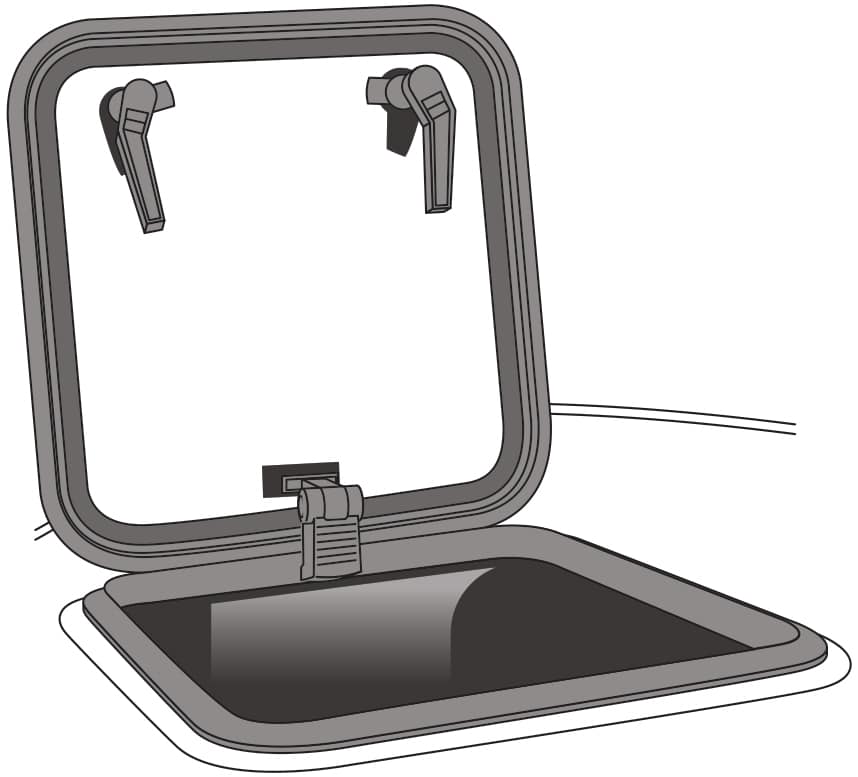
Batten Down the Hatches
This simple step would prevent countless sinkings. At some point, it is going to rain. If the hatches leak — especially cockpit hatches where rainwater can accumulate — then we can end up with water in the bilge, an overwhelmed bilge pump, and a progressive sinking situation. Hatches need to have good, watertight gaskets, and they need to be able to be dogged down. Gaskets can deteriorate over time, so hit all the hatches with a freshwater hose once a year to make sure they are watertight (more on this below). And be sure to check that all are positively dogged down whenever away from the boat for anything more than a quick errand. The same advice goes for fuel fills, water fills and deck plates: Check the seals and replace as required.

Good Lines
A falling tide can easily trap a boat beneath a dock, where it will fill up with water as the tide rises — often leaving it hanging on its side by its lines. Good dock-line technique can save the day. It’s important to know the range between high and low tide to leave enough slack in the lines to allow the boat to stay centered and level. Long lines set at shallow angles, spring lines that run the full length of the boat, and crossed stern lines are all recommended. (TideMinders offers a product for boats that tie to pilings.)

Weighty Issues
It’s not uncommon to see a boat with cockpit scuppers or freeing ports designed to sit barely above the waterline once people, gear and fuel are aboard. Now replace that two-stroke outboard with a heavier-by-200-pounds four-stroke and watch the scuppers sink down to the waterline before people and gear are aboard. A big rain or an unexpected leak can easily push the scuppers below the water, causing them to allow water in the boat instead of out. This creates a progressive situation where the weight of the water pushes the boat deeper and allows more water to come in at a faster rate. Always be careful when adding weight to the boat.
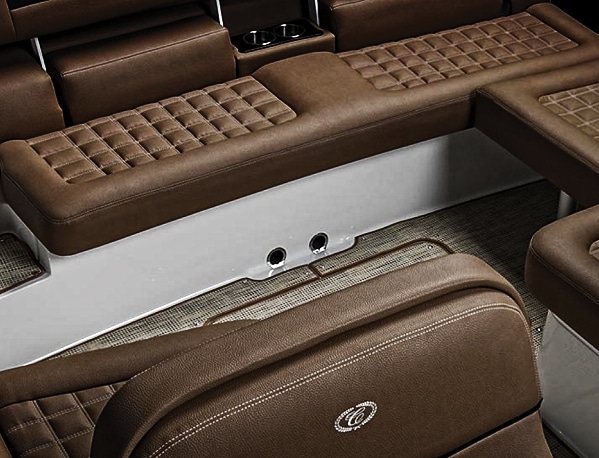
Cockpit Crisis
The cockpit is where a lot of boating fun happens — think fishing, staging for watersports, and socializing. Cockpit flooding issues, however, can shut down the party before it ever gets started. Low freeboard trailer boats can be swamped when docked with the stern facing open water. Stormy conditions can generate waves big enough to splash into the cockpit — sometimes overwhelming the drainage and bilge pump.
There have also been a surprising number of sinkings due to cockpit drain fittings and hose fittings leaking into the bilge. Sometimes these are routed through the bilge area with little to no access, making it difficult to ensure hose clamps are tight and the hose is in good condition. There have even been cases of cockpit drains that drain directly into the bilge instead of overboard. Yikes! Clear, effective drains, tight cockpit covers, and vigilance during stormy weather could prevent one big rain from spelling disaster.

Doh!
Of course, there are always a few bonehead mistakes that send boats to the bottom every year. Forgetting the drain plug when launching, forgetting to tighten the lid after cleaning a strainer, and leaving a shore hose running on deck after cleaning have all resulted in multiple dockside sinkers. Good habits can be helpful, like always checking for water ingress after launching and after cleaning a strainer, and always putting away shore hoses after use. Another good habit is conducting a yearly stress test by hosing down the boat with gobs of water to make sure the hatches don’t leak and the drains flow freely — any drips that make it to the bilge should be rectified. Then put the hose in the bilge to make sure the pump and float switch will be ready for duty if there is an unexpected gusher.




